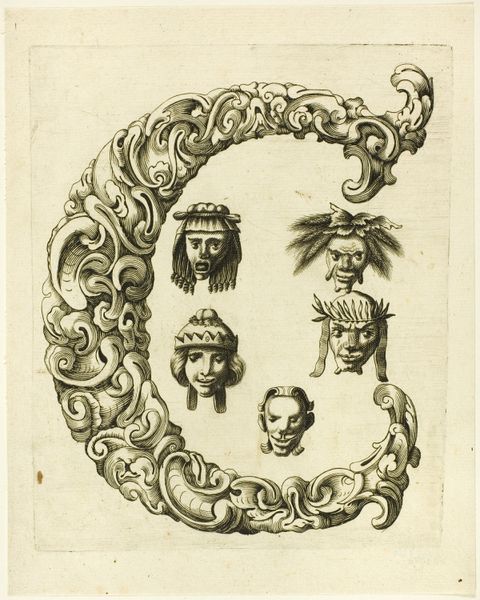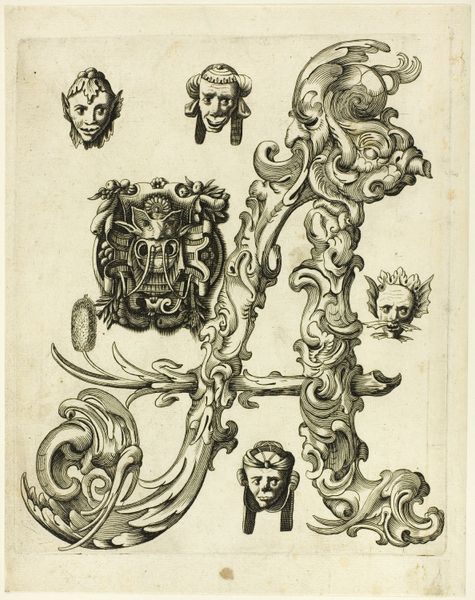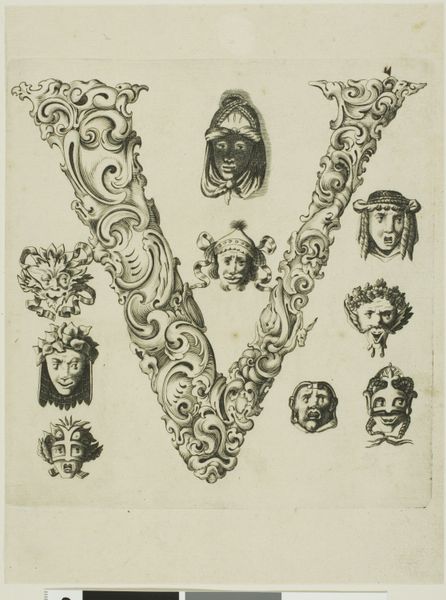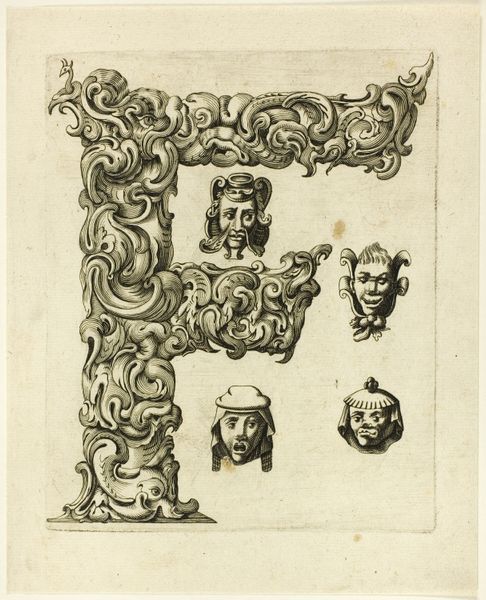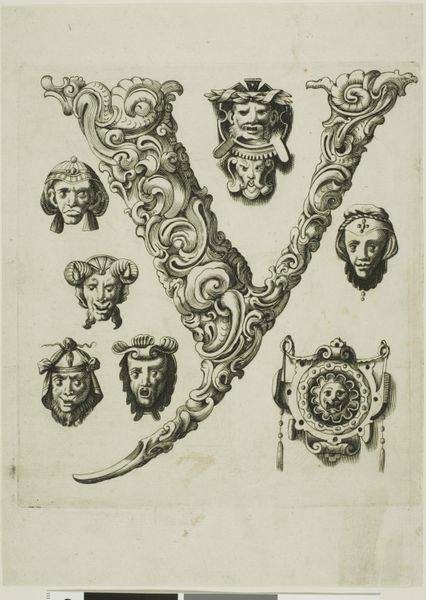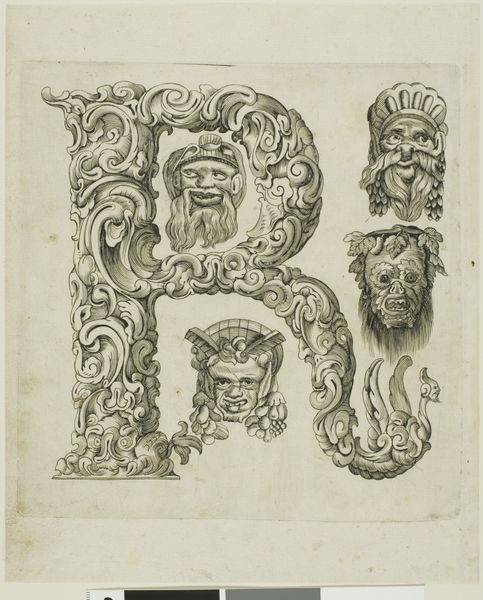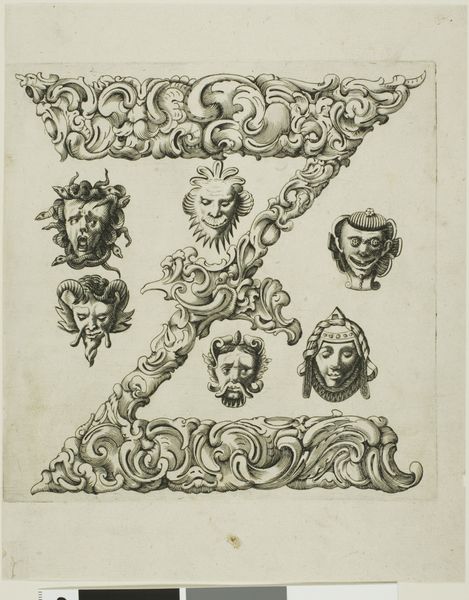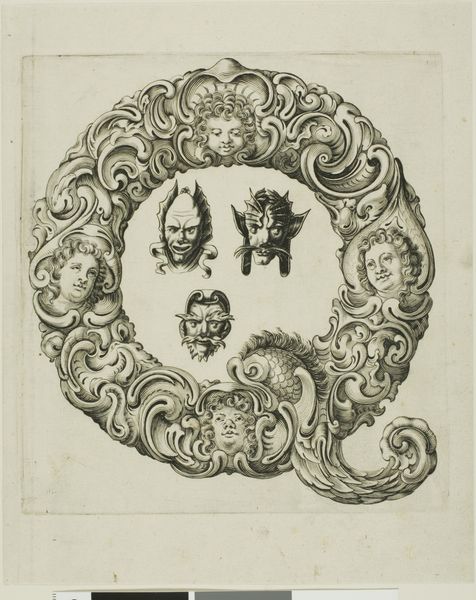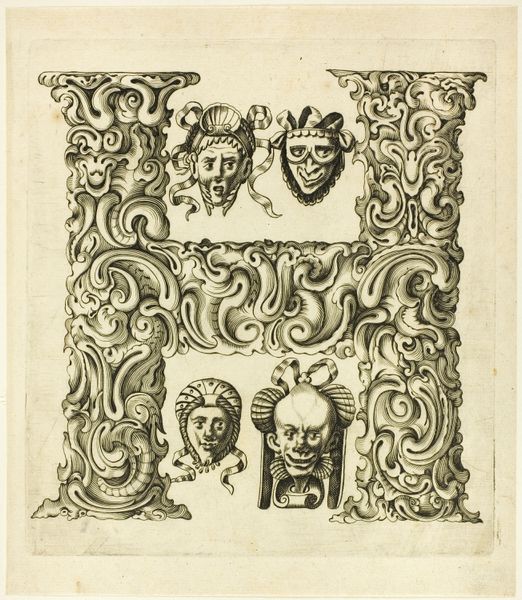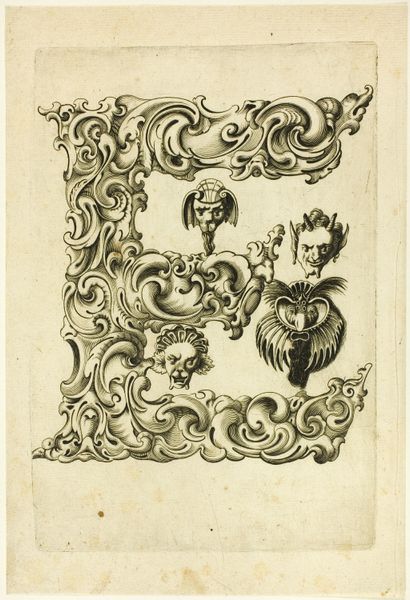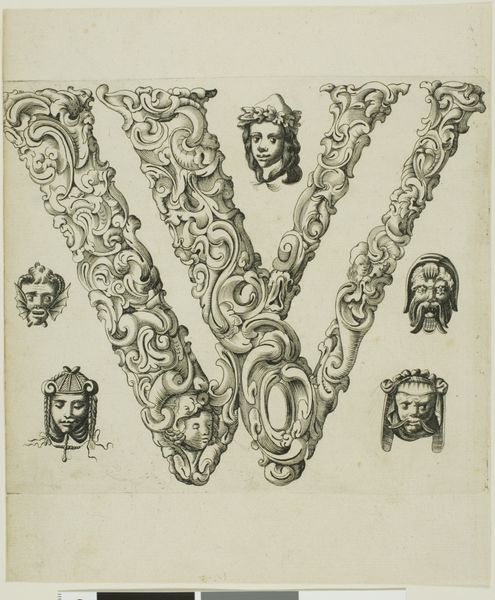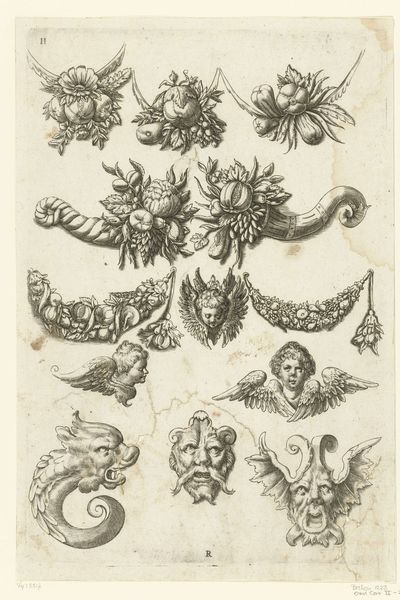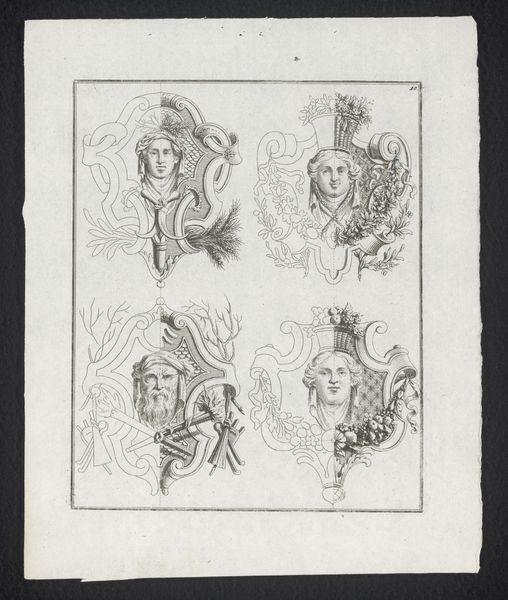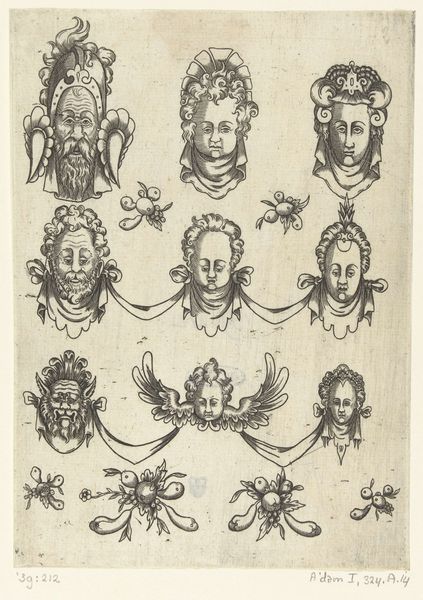
drawing, print, paper, engraving
#
drawing
# print
#
figuration
#
paper
#
geometric
#
history-painting
#
engraving
Dimensions: 226 × 155 mm (sheet)
Copyright: Public Domain
Editor: This is Peter Aubry's "Letter I," created around 1630. It's an engraving, so lines are really precise. The letter itself is ornate, almost like a baroque column, but then you have all these grotesque masks floating around it. What's so striking about this piece? Curator: This work exists in a very specific historical context, during a period of immense social and political upheaval. We can see these grotesque masks not just as decorative elements, but as reflections of anxieties surrounding identity and power. Think about the symbolism of the grotesque itself – the distortion of the human form. In what ways do you see this distortion acting as social commentary, particularly related to prevailing gender roles, race or class hierarchies? Editor: That’s interesting. I hadn't considered that the masks could be symbols of…discomfort, maybe. Almost like caricatures. It makes me think about the people commissioning these kinds of works, who they were, and what messages they were trying to send. Curator: Exactly! Aubry uses figuration alongside geometric structures that give the image order. Look closely: there are multiple faces, of multiple perceived "types," presented without context or background. How can we use this piece to challenge and reshape assumptions? Can art be weaponized? Editor: I guess it becomes more about who is controlling the narrative and using the art. It definitely shifts my perspective, makes it feel less… neutral. Curator: Right, recognizing art's role in perpetuating or subverting such constructs invites dialogue on accountability, empowerment, and agency. I think it gives us some food for thought about social constructs! Editor: I definitely see that now; this piece is really powerful and multifaceted. Curator: It's a window into understanding art as a reflection, and a tool for the politics of the world.
Comments
No comments
Be the first to comment and join the conversation on the ultimate creative platform.
